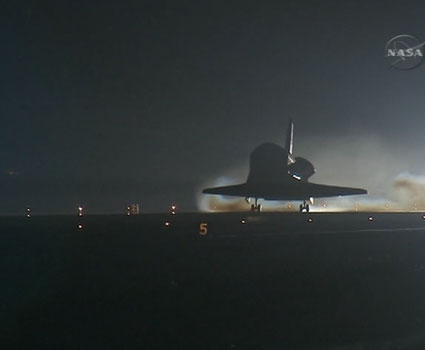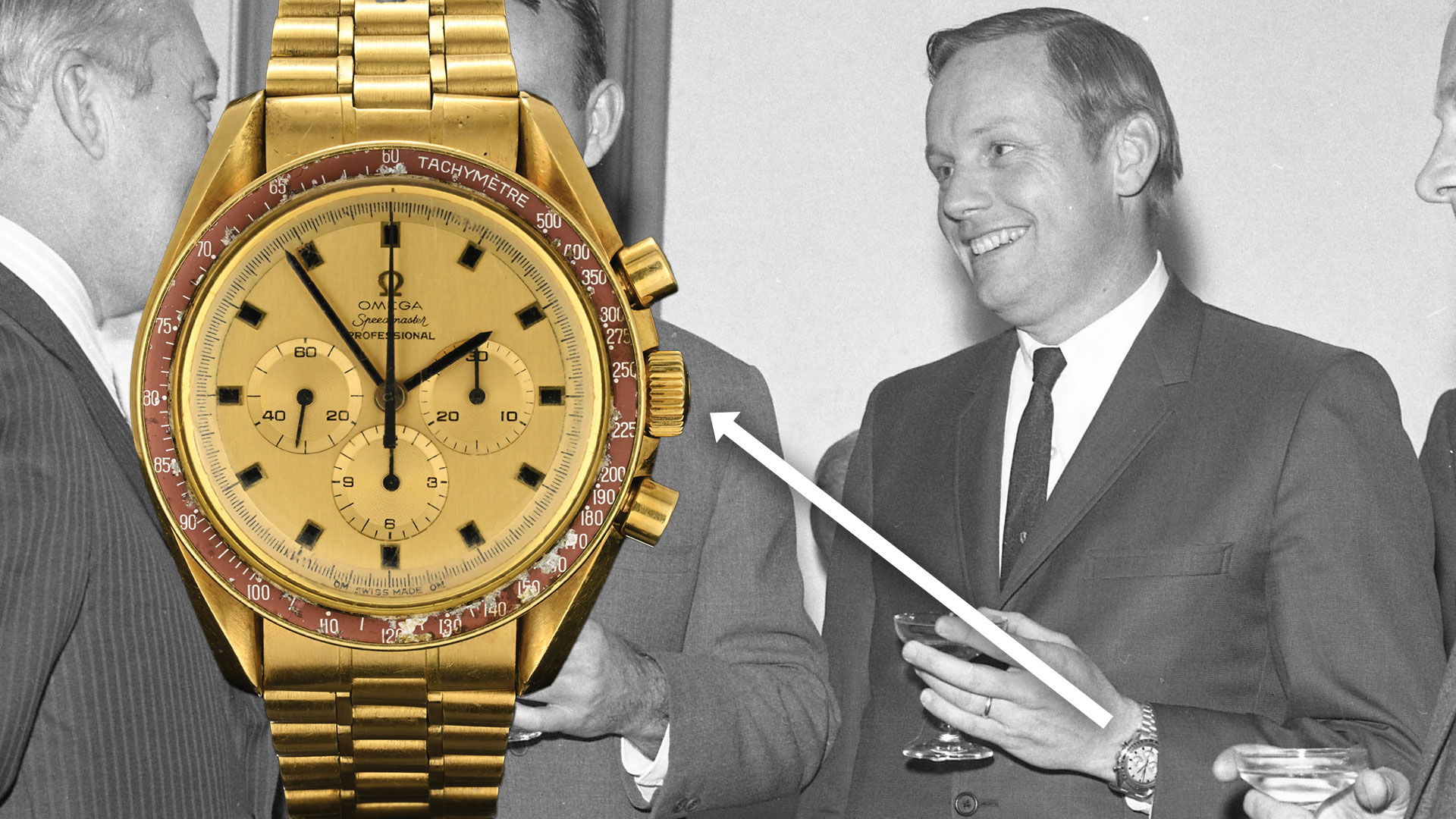Space Shuttle Endeavour Lands Safely in Florida

Thisstory was updated at 11:16 p.m. ET.
HOUSTON- Space shuttle Endeavour touched down safely in Florida Sunday evening,beating a stormy weather forecast after delivering NASA?s last major additionsto the International Space Station (ISS).
CommanderGeorge Zamka piloted Endeavour and his five crewmates to a landing at 10:20p.m. EST (0320 Monday GMT) on NASA's Shuttle Landing Facility runway at theKennedy Space Center in Florida.
?Houston,it is great to be home,? Zamka told Mission Control. ?It was a greatadventure.?
Theirreturn concluded Endeavour's STS-130 mission, which installed the new Node 3?Tranquility? module and its adjoining seven-window spaceobservation deck, called the Cupola, on the station. The 14-day mission leftthe $100 billion space station, now more than 11 years old, about 98 percentcomplete.
Japaneseastronaut Soichi Noguchi put those new station windows to good use duringEndeavour's landing. He said he could see the shuttle's bright trail as itre-entered Earth?s atmosphere.
?Iwatched the shuttle atmospheric re-entry from Cupola window,? Noguchi posted onhis Twitter page. He has lived on the station since December. ?The view wasdefinitely out-of-the-world.?
Get the Space.com Newsletter
Breaking space news, the latest updates on rocket launches, skywatching events and more!
The217-orbit flight included three spacewalks to configure the new hardware aswell as brought aboard the parts necessary to successfully repair the station?swater and urine recycling system. Endeavour flew about 5.7 million miles (9.1million km) during the spaceflight.
?Thisis a great mission,? shuttleastronaut Kathryn ?Kay? Hire said Saturday before landing. ?[I] just can?tdescribe how wonderful it was to look out the Cupola and see that wonderfulNode 3 onboard the International Space Station especially as we undocked. We?rejust all very excited about how well things have gone.?
Awindow beyond words
Openedlate in the mission, the Cupola?s panoramicspace windows ? including the largest single pane of glass ever launchedinto space ? exceeded the astronauts? imaginations, leaving them without thewords to describe the view.
?Iwish we could show you that Cupola view because I think all of us are probablygoing to spend the rest of our days trying to describe what it was like,? saidStephen Robinson, who together with fellow mission specialists Hire, RobertBehnken and Nicholas Patrick, as well as pilot Terry Virts, returned to Earthwith Zamka.
Thedome-shaped module is intended as more than just a sightseeing room. During themission, efforts were made to install a workstation to control the ISS?srobotic arms but hardware interference deferred that activity to afterEndeavour departed.
Thoughthe 1.6-ton Cupola received most of the public?s attention during the STS-130mission, it was dwarfed in both size and importance by Endeavour?s primarypayload, the nearly 12-ton Tranquility module. With both additions installed,the space station now weighs nearly 800,000 pounds (362,873 kg).
Namedafter NASA?s historic Apollo 11 lunar landing site, the station?s new Tranquilitymodule will serve as part gym and part life-support equipment center for theoutpost?s crew. The astronauts loaded some of that gym equipment into the newroom while they were visiting the station. A treadmill named after TV comedianStephen Colbert ? who last year staged a campaign to have Tranquility namedafter him ? will be moved in later.
Duringan extra day added to their time docked at the station, Endeavour?s crew movedrefrigerator-sized equipment racks ? including the station?s urine recycling systemand U.S.-built waste containment system (a space toilet) ? from inside othermodules into Tranquility.
Threespacewalks were conducted by Behnken and Patrick to connect the node and Cupolato the station, including running ammonia coolant lines that had to beredesigned before Endeavour launched. The astronauts also moved an old dockingadapter to the end of the new Tranquility node to protect its end cap and serveas a spare docking port.
Theyeven had time to stage their own weightless version of the WinterOlympics in space and took a congratulatory call from President BarackObama.
Fourshuttle flights remain
NASA?sSTS-130 mission marked the agency?s 32nd space shuttle to visit theInternational Space Station and the 24th flight for Endeavour itself. It is thefirst of NASA?s final shuttle missions this year.
NASAcurrently plans to launch four more shuttle missions to complete the assemblyof the station and stock the orbiting laboratory with more supplies.
Thenext mission, STS-131 is targeted to launch on shuttle Discovery on April 5.The fleet is slated to retire by the end of the year.
Aweek before Endeavour launched, President Obama unveiled a new 2011 budgetrequest for NASA, which cancelled the Constellation program developing NASA?snew spaceships.
Theplan, if approved by Congress, would set aside $6 billion over the next fiveyears to spur development of new commercial spacecraft that could sendastronauts to orbit and the space station, freeing NASA to concentrate on moreloftier goals of sending astronauts to the moon, asteroids or Mars.
Endeavour?sspaceflight also marked the penultimate flight for the orbiter. The youngestshuttle in NASA?s three-orbiter fleet, Endeavour is scheduled to launch on itsfinal mission, STS-134, in July.
- Images - Space Station's New Window on the World
- Astronauts Hold Winter Olympics in Space
- Video Show - Riding the Space Shuttle
Join our Space Forums to keep talking space on the latest missions, night sky and more! And if you have a news tip, correction or comment, let us know at: community@space.com.

Robert Pearlman is a space historian, journalist and the founder and editor of collectSPACE.com, a daily news publication and community devoted to space history with a particular focus on how and where space exploration intersects with pop culture. Pearlman is also a contributing writer for Space.com and co-author of "Space Stations: The Art, Science, and Reality of Working in Space” published by Smithsonian Books in 2018.In 2009, he was inducted into the U.S. Space Camp Hall of Fame in Huntsville, Alabama. In 2021, he was honored by the American Astronautical Society with the Ordway Award for Sustained Excellence in Spaceflight History. In 2023, the National Space Club Florida Committee recognized Pearlman with the Kolcum News and Communications Award for excellence in telling the space story along the Space Coast and throughout the world.









